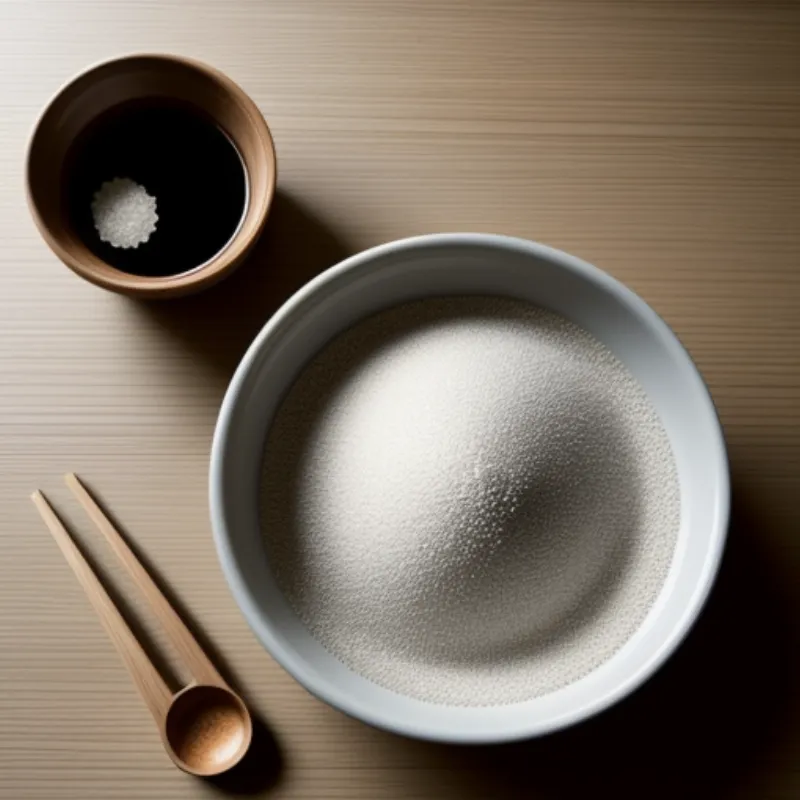Soy sauce, the ubiquitous brown liquid found on tables worldwide, is more than just a condiment. It’s a culinary chameleon, adding a burst of umami to everything from stir-fries to sushi. Have you ever wondered how this flavor powerhouse is made? It’s a fascinating journey, and surprisingly achievable at home! In this guide, we’ll delve into the art of crafting soy sauce, unlocking the secrets to brewing your own batch of liquid gold.
The Magic of Soy Sauce: A Culinary Journey Through Time
Soy sauce boasts a rich history, originating in China over 2,000 years ago. Traditionally brewed over months, this fermented wonder gets its signature umami from soybeans, wheat, salt, and a fascinating fungus called Aspergillus oryzae.
While replicating the complex profiles of aged soy sauces requires time and patience, this guide offers a simplified approach to crafting a delicious, homemade version. You’ll be amazed at the depth of flavor you can achieve!
Homemade Soy Sauce: Ingredients You’ll Need
Core Ingredients:
- Soybeans: 1 cup, preferably organic and non-GMO (provides the base for fermentation)
- Wheat: 1/2 cup, adds a nutty sweetness and aids in fermentation (can substitute with barley or rice for gluten-free)
- Salt: 1/4 cup, a key player in controlling fermentation and flavor
- Water: 4 cups, filtered for best results
Special Ingredient:
- Aspergillus oryzae (Koji Starter): 1 teaspoon, the magic fungus responsible for the umami magic (available online or at Asian grocery stores)
Tools of the Trade:
- Large pot
- Cheesecloth
- Sterilized glass jar (at least 1-gallon capacity)
- Rubber band
- Fine-mesh strainer
- Bottles for storing your homemade soy sauce
Let’s Get Brewing: Step-by-Step Guide
1. Preparing the Soybeans:
- Rinse the soybeans thoroughly and soak them in cold water overnight. This helps to soften them for the next step.
2. Roasting the Wheat:
- Preheat your oven to 350°F (175°C).
- Spread the wheat evenly on a baking sheet and roast for about 15-20 minutes, or until fragrant and lightly browned. This process develops a nutty flavor that will enhance the soy sauce.
3. Mixing and Inoculating:
- Combine the soaked soybeans, roasted wheat, and salt in your large pot.
- Add 4 cups of water and bring the mixture to a boil. Reduce heat and simmer for about 2 hours, stirring occasionally to prevent sticking.
- Allow the mixture to cool to room temperature.
- Once cooled, sprinkle the Aspergillus oryzae (koji starter) over the mixture and mix well. This is a crucial step as the koji will initiate the fermentation process.
4. Fermentation Time:
- Transfer the mixture to your sterilized glass jar, leaving some headspace at the top.
- Cover the jar with cheesecloth and secure it with a rubber band. This allows for airflow while keeping contaminants out.
- Place the jar in a cool, dark place (ideally around 68-77°F or 20-25°C).
- Allow the mixture to ferment for at least 6 months, stirring every few days to ensure even fermentation. You’ll notice the mixture changing color and developing a distinct aroma over time.
5. Pressing and Bottling:
- After 6 months, line your strainer with cheesecloth and place it over a large bowl.
- Transfer the fermented mixture to the strainer and allow the liquid to drain overnight. You can gently press the solids to extract more liquid. This liquid gold is your homemade soy sauce!
- Transfer the soy sauce to sterilized bottles, leaving some headspace. Seal the bottles tightly and store them in a cool, dark place.
 Homemade Soy Sauce Ingredients
Homemade Soy Sauce Ingredients
Tips and Tricks for the Best Homemade Soy Sauce:
- Patience is Key: Remember, good things take time! The longer you ferment your soy sauce, the more complex and flavorful it will become.
- Temperature Matters: Maintain a consistent temperature during fermentation for optimal results. A slight variation is fine, but avoid extreme temperature swings.
- Taste and Adjust: As your soy sauce ferments, taste it periodically and adjust the salt level if needed. You can add a bit more salt if it tastes too bland.
FAQs: Answering Your Soy Sauce Queries
Can I make soy sauce without wheat?
Absolutely! You can use barley or rice as a gluten-free substitute for wheat. The process remains the same, but the final flavor profile may vary slightly.
Where can I find Aspergillus oryzae (koji starter)?
You can find koji starter online or at Asian grocery stores. Make sure to purchase from a reputable source to ensure quality.
My soy sauce has a slightly sweet taste. Is that normal?
Yes, it’s completely normal. The natural sugars in wheat break down during fermentation, resulting in a slightly sweet undertone.
Savoring the Fruits (or Soybeans) of Your Labor:
Congratulations, you’ve crafted your very own batch of homemade soy sauce! It’s a testament to your culinary dedication. Now comes the best part – enjoying the fruits (or soybeans) of your labor.
- Dipping Delight: Use your homemade soy sauce as a dipping sauce for dumplings, spring rolls, or sushi.
- Flavor Enhancer: Add a dash to stir-fries, marinades, or soups for an umami boost.
- Secret Ingredient: Incorporate it into salad dressings or sauces to elevate their flavor profiles.
 Homemade Soy Sauce Fermenting
Homemade Soy Sauce Fermenting
Unlock the Joy of Homemade Flavor:
Crafting your own soy sauce is a rewarding experience that allows you to control the ingredients and create a truly unique condiment. Don’t be afraid to experiment and make this recipe your own! Share your homemade soy sauce journey with us in the comments below – we’d love to hear about your experiences. And for more culinary adventures, explore our other homemade sauce recipes [link to relevant pages on your website]. Happy brewing!
